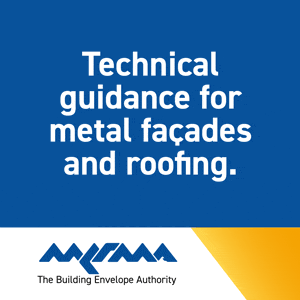When is a cladding system, not a system?
- Specify & Build
- Jul 28
- 3 min read
Nigel Waring, Specification Manager at Vivalda Group, advises architects to tread carefully when specifying ‘oven-ready’ façade systems.
Since the formation of the Building Safety Regulator in 2022, there has been a sea change in the culture of the industry, which is now striving to set the very highest standards of safety and compliance. However, with so many new regulations, it’s little wonder that architects are finding it tough to keep their understanding of cladding specification up to date.
In an effort to satisfy building regs, many firms like the idea of picking ‘oven-ready’ façade systems off the shelf where the fixings, framing, breather membranes, insulation and the rainscreen panels are all fully tested and ready to go on the wall. The trouble is, while the term ‘system’ suggests an organised set of products that fit together to make a single compliant solution, this may not be the case if a single part of that eco-system is changed.

Cladding specification in practice
Steel framed wall systems, (known as SFS external walls) form the main structure for any rainscreen cladding structure and are subject to the test criteria in BSEN1364 (for non-loadbearing SFS) and EN1365 (for loadbearing SFS). Many manufacturers claim to provide complete external wall systems, including the final rainscreen cladding panels.
Any proposed cladding system comprises a large number of elements, all of which create a single façade solution. Change a single sub-component and the whole thing comes crashing down in terms of regulatory adherence. Whichever ‘system’ is specified will need to supply test evidence of this compliance. This test will be from internal lining boards right through to sheathing board. Some manufacturer tests include the rainscreen slab too and will have a specified performance of insulation and integrity. Crucially, their ‘through wall’ tests are very specific to the products used, with no leeway for substitutions.
Provided you, as the specifier, have complied with the requirements the SFS manufacturer has tested with, then there should be no issues. Any deviation from this will require the Fire Design Engineer to apply an assessment based on ‘Field of Direct Application’. The word ‘through wall’ refers to a manufacturer that has tested all elements of the external wall from inside to outside and vice versa and some, to the face of the rainscreen.

In the real world…
For example: an architect specifies a particular metal wall lining system, comprising one 15mm fire-resistant plasterboard, 50mm partition roll, 100mm SFS studs, 12.5mm sheathing board and 50mm rainscreen insulation. This through-wall system is marketed as being fully tested with 60 minutes of fire performance in both directions – certified to EN1364 with the use of a specific brand of SFS studs and components. No mention is made of the rainscreen, since it is required to comply with EN13501.
When the project goes to site, the main contractor doesn’t have a supply chain agreement with the business selling the system, so replaces the boards with a comparable brand. But this is no longer a ‘system’, since the collection of products that gained approval through testing is no longer the same. In most cases, a fire design engineer will need to be consulted on whether the 60 minutes is still valid. One way around this issue might be to ask the manufacturer to supply their evidence of compliance with EN1364 and compare it with the specification for your own external wall build up. Again, any deviation will require a fire design engineer’s input.
The contractors undertaking this swap out aren’t doing so with mal intent; it’s more down the realities of their supply agreements. However, architects would be well advised to consider carefully the implications of opting for a ‘through-wall system’, given the limitations this approach gives in terms of specification flexibility.
If you’re involved in a project with little likelihood of façade changes or revisions, then a though-wall system may be a sound decision. However, in practice this can limit choice. In the end, more transparency across the supply chain and better, open communication between specifier, contractor, fire safety officer and product manufacturer are key.
.png)























































.png)

